Thomas Becket Tomb
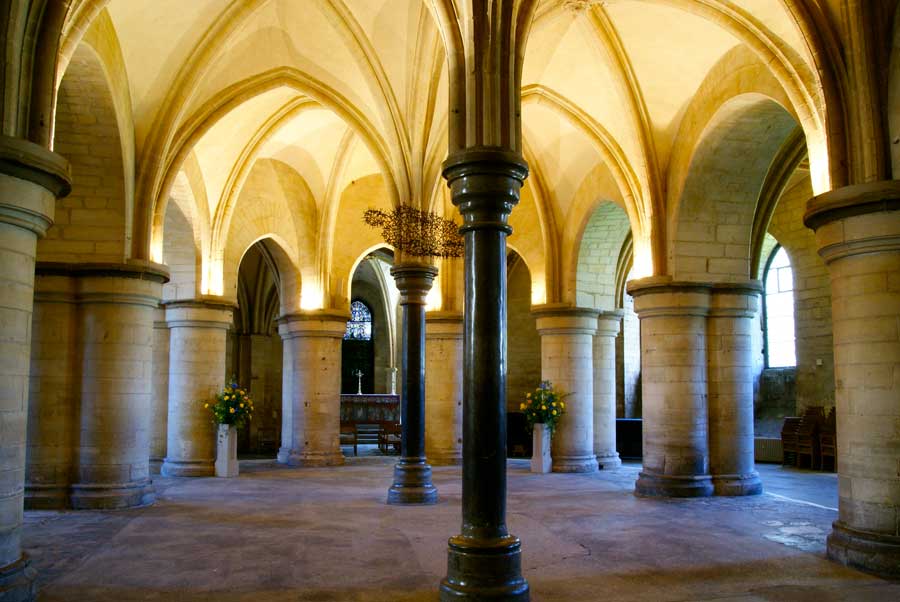
Thomas Becket’s tomb was first located in the eastern crypt until translated to the newly built shrine in the Trinity Chapel in 1220. The crypt became an important part of the church building where secular tombs and monuments could be placed. The Sanctuary and Trinity Chapel were reserved for senior clergy and royalty, whilst other internments could be placed below in the crypt and yet still be close spatially to the High Altar.
After the Dissolution the crypt fell into disrepair and for a long period was used as a wood and coal store. Dr James Beaney, a local benefactor, died in 1891 and left a sum of £1,000 to the Dean and Chapter which was used for the restoration of the crypt areas under the guidance of the architect Sir Reginald Blomfield.
Chapel of Saint Nicholas
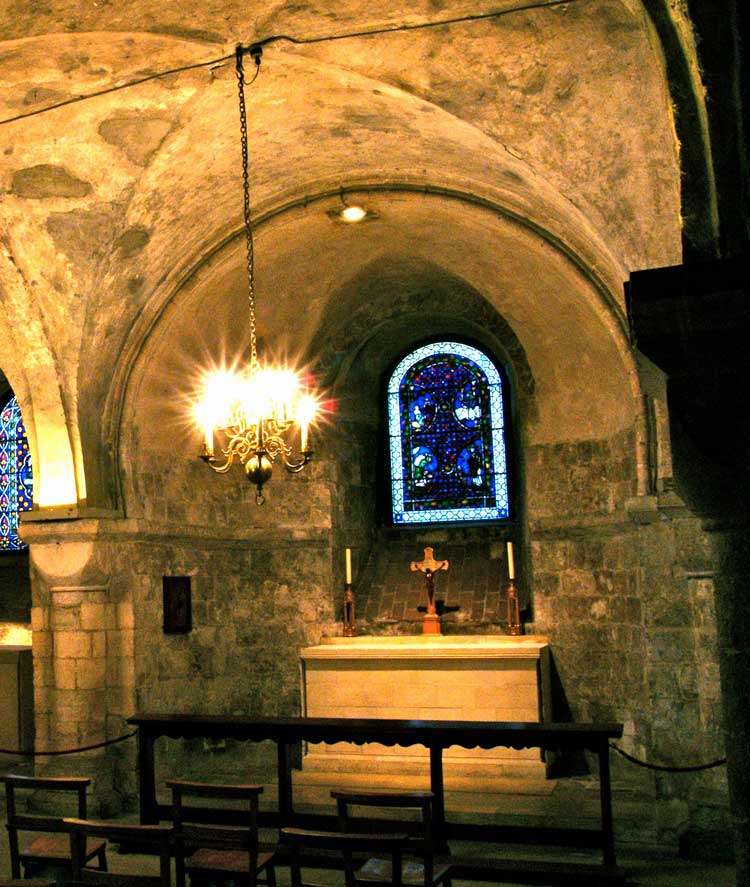
In the North Transept of the Crypt is the chapel of St Nicholas, the saint thought to be the inspiration for today’s Father Christmas. The apsidal-ended chapel had stood empty since the Dissolution. The chapel was restored in 1956-7 by the sons of the Reverend Dr Samuel Bickersteth and his wife Ella as a thanksgiving for the lives of their parents who lived for many years within the cathedral precincts.
The altar was restored by the cathedral masons under the supervision of the architectural firm of Seely (the designer) and Paget (the architect) who were based in Smithfield, London. The altar comprises some of the original Caen Stone with a mensa, the flat overlying stone, of Bath Stone. Anthony Swaine, The Clerk of the Works, is said to have selected the slab himself and chose a variety of Bath Stone quarried from the Monk’s Park Quarry, located to the south of Corsham in Wiltshire. This quarry was opened in 1886, when it was known as Sumsion’s Monk’s Quarry after the owner, Isaac Sumsion. Apart from a 12 year hiatus, during and immediately following the Second World War, production was continuous from the underground quarries until 2004. In 2016 part of the original quarry site was re-opened and Monks Park Stone was again on the market and described as a high quality and attractive medium- to fine-grained Bath Stone. However, in March 2018 the new quarry owners announced the ‘mothballing’ of the site as production was once again suspended.
Chapel of Saint Mary Magdalene
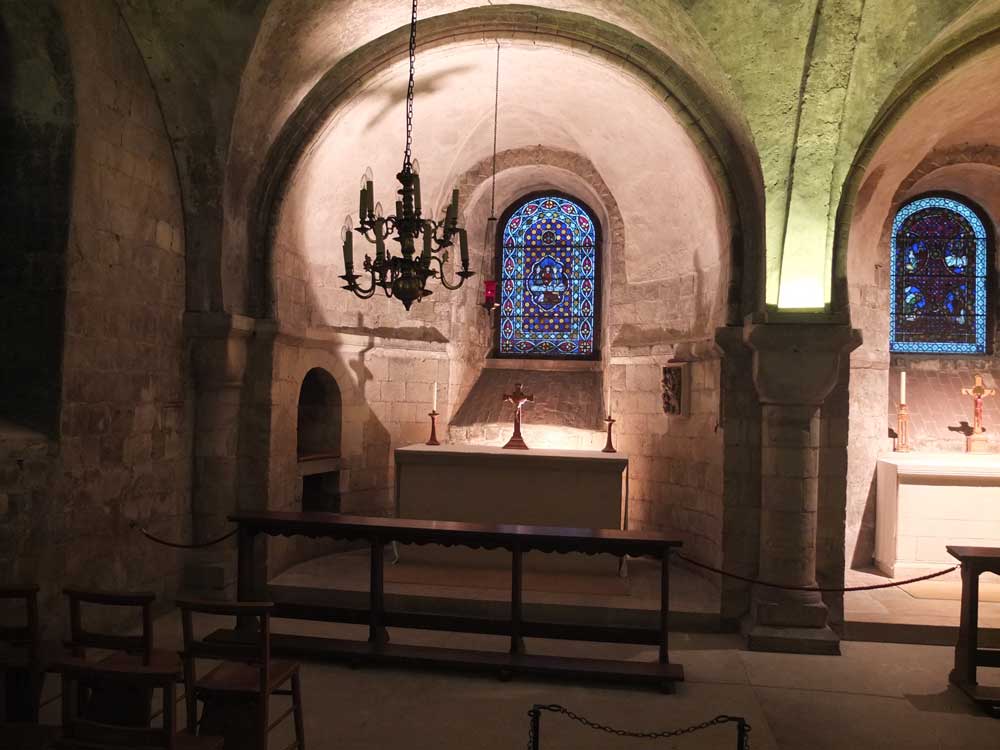
The chapel was restored in 1955-6 with the altar and predella donated by the Revd Canon Frederick Joseph John Shirley. The altar has the appearance of a variety of Bath Stone. Canon Shirley died in 1967 and following the cremation of his body his ashes were interred within the chapel to the south of the altar and marked on the floor by a commemorative inscription.
On the floor in front of the chapel is a badly damaged raised stone memorial or cross slab of Purbeck Marble. The memorial bears a disc-shape headed staff and has been dated c1250-1350. No records exist as to the origin of the coffin-shaped stone, although several potential occupants interred beneath have been put forward, including Thomas Becket. It has also been suggested by Tempest Hay that the cross slab may have come from a derelict church elsewhere in Canterbury in the early 20th Century.
Chapel of the Holy Innocents
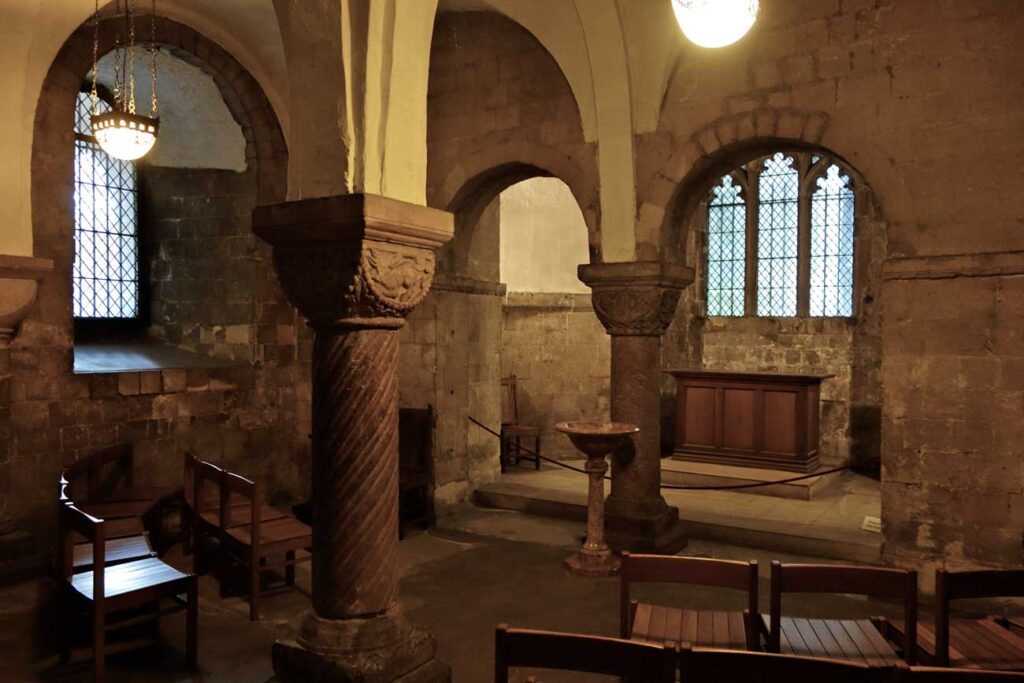
The Chapel of the Holy Innocents is today used for services to baptise babies and children into membership of the Church of England. Before the apsidal chapel stands a baptismal font. The cathedral inventory states it is of late nineteenth century date and describes it as a bowl supported upon a turned column by a cable frieze topped by a scotia moulding. The inventory incorrectly labels the material a serpentine marble. The marble used for the font is a brecciated limestone made up of numerous angular blocks of pink, white and brown limestone. It may be a variety called Breccia Pernice which was used for the low level plinth in Archbishop Tait’s tomb in the north east transept of the cathedral.
Black Prince’s Chantry Chapel
Also known as the Huguenot Chapel
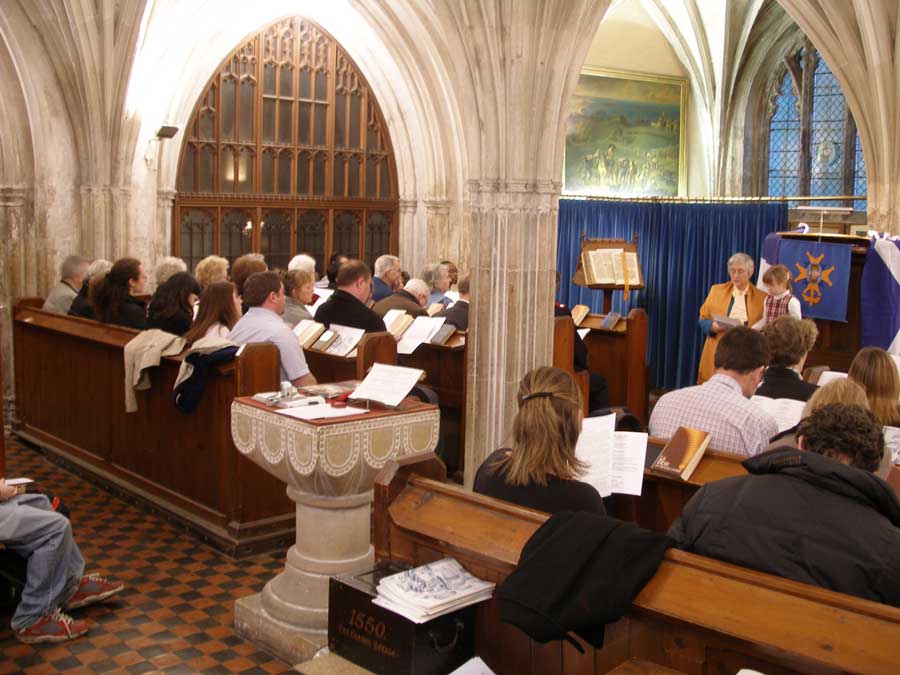
The Huguenots were granted the western crypt to worship and in 1875 Pasteur Joseph Martin introduced a new font for French Protestant baptisms. By the 1880s the crypt space had became too large for the dwindling congregation and the French Protestant Church retracted back into the Black Prince’s Chantry Chapel where the font and other fittings were moved to. The font is today in good condition and occupies space at the western end of the central aisle and is still in use for baptisms. The stone that the font and its pedestal have been carved from is an oolitic limestone from the Jurassic belt of England with the appearance of a variety of Bath Stone
Lady Elizabeth Trivet (d. 1433)
Cathedral Benefactor – for more details click here
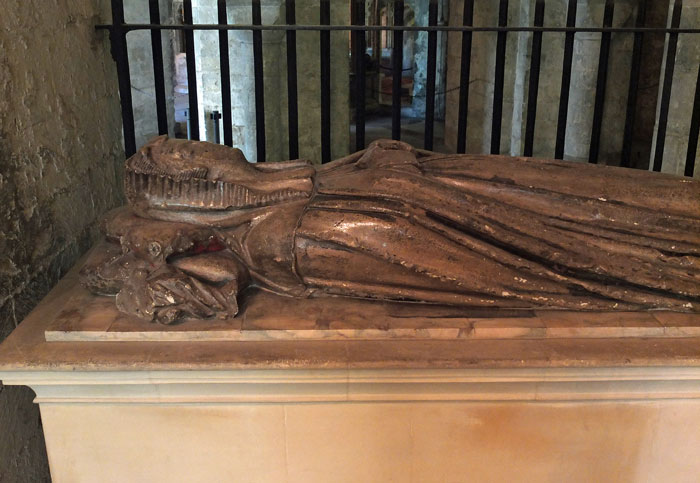
The tomb is located in the western crypt between the Chapel of Our Lady Undercroft and St Gabriel’s Chapel. It was previously identified as the memorial of the Countess of Athol until, in 1905, St John Hope provided compelling argument that it commemorated Lady Trivet.
In John Dart’s The History and Antiquities of the Cathedral Church of Canterbury an engraving shows a tomb chest “decorated with traceried panels containing shields of arms.” From surviving fragments in 1905 Hope considered the sides and ends of the tomb to have been made of alabaster. The tomb today consists of a recumbent effigy upon a plain tomb chest. The effigy is badly mutilated, but is understood to have once been painted. It is likely the stone is from Purbeck and possibly Purbeck Marble. The effigy lies upon a number of square tiles of alabaster. The tomb chest has been described as made of “freestone” and was designed by Harold Anderson (Surveyor to the Fabric of Canterbury Cathedral from 1946 to 1968) in 1951. The “freestone” is a limestone. In 1951 Anderson was making repairs to the cathedral fabric using a variety of Bath Stone called Box Ground. The finish on the stone chest does not make it possible to verify the use of this stone, but it remains the most likely source of material.
Lady Joan de Mohun (d. 1404)
for more details click here
The oldest identifiable tomb in the crypt is that of Joan de Mohun to the south of the altar of Our Lady Undercroft. This important position indicates the extent of her benefactions to the Priory. The tomb is a recumbent effigy upon a chest with an elaborate canopy and was paid for by Lady Joan as the focal point of her chantry. The engraving in John Dart’s The History and Antiquities of the Cathedral Church of Canterbury (1726) shows the tomb in good condition. By 1800 Edward Hasted was to write of the tomb: “…but this has, as well as the rest of the monuments in this part of the undercroft, been from time to time much defaced by the carelessness of the workmen belonging to the church, who make this place the common repository for their materials, ladders and other such like unwieldy lumber; of course it is suffered to remain in a very filthy condition.” The tomb was restored in 1922 and in 1992, but still shows the signs of considerable damage.
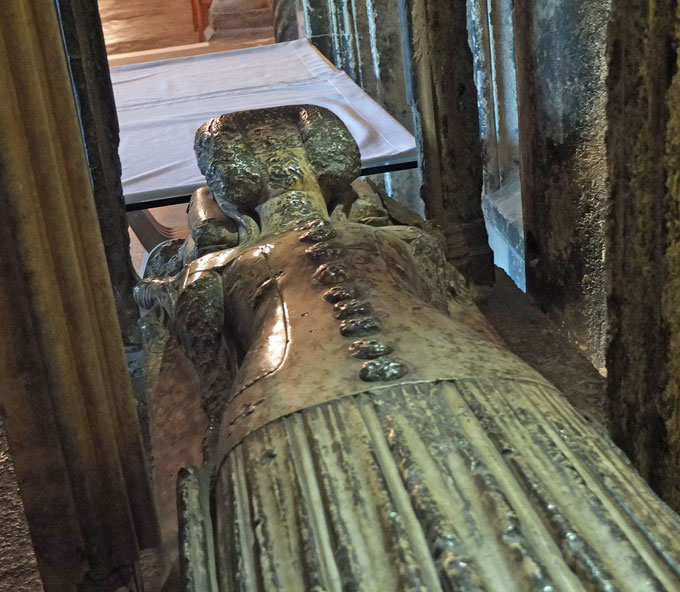
The effigy of Lady Joan Mohun is of alabaster and she rests upon a tomb chest of Purbeck Marble. The low plinth is of Caen Stone as is presumably the original stone of the canopy. Repairs and replacements have been carried out to parts of the structure and the eastern uprights supporting the canopy are carved from an oolitic limestone.
John Morton
Archbishop of Canterbury (1486–1500), and cardinal (1496) – for more details click here
Morton was influential in bringing Henry VII to the throne in 1485 and soon after was appointed both Archbishop of Canterbury and Lord Chancellor. His will, written in 1500 declined a grand tomb choosing instead a modest interment beneath the western crypt floor covered by a large slab of Purbeck Marble, now much mutilated. His burial was in the privileged position before the altar of the Virgin Mary in the Chapel of Our Lady Undercroft.
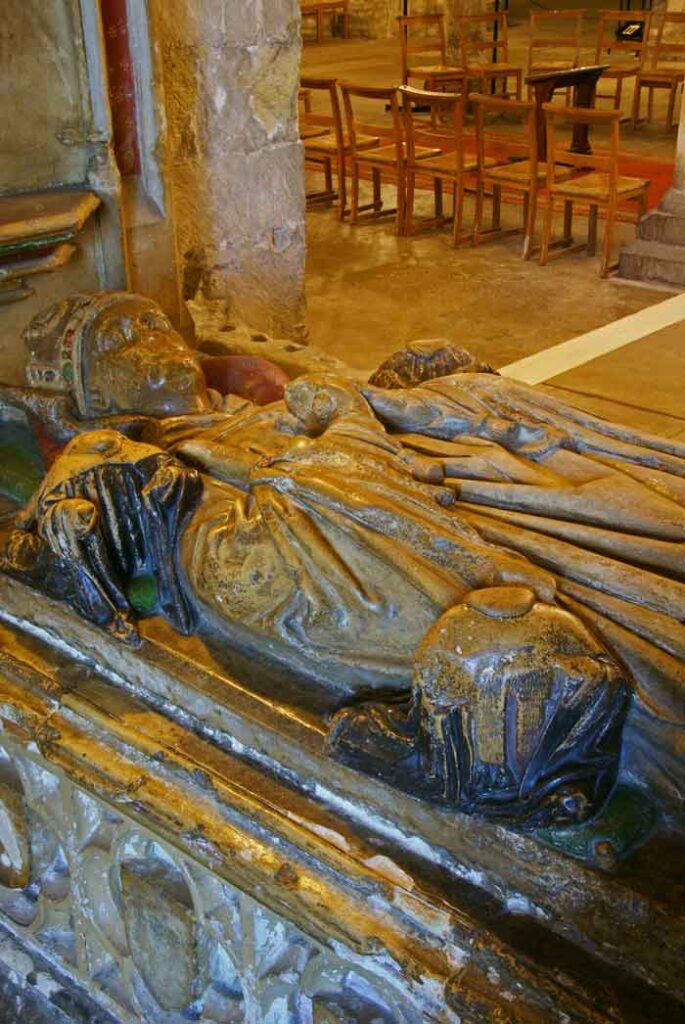
The slab of Purbeck Marble once possessed a commemorative figure as the indent is still visible for the brass plate. The brass was probably removed during the Civil War when Parliamentarian soldiers removed all the plates in the cathedral for melting down for armaments. In removing the brass the marble slab may have been broken, as by 1670 the grave contents were open to pilfering. When the grave was opened that year by Ralph Sheldon (the archbishop’s nephew) only the skull remained. Ralph removed the skull and kept it in a lead-lined box. Upon his death the box passed to his niece and finally made the journey to Stonyhurst College in Lancashire. In 1991 the college authorities decided to have the skull forensically tested to assist in a decision as to whether or not to return the box and contents to Canterbury Cathedral. While the results were consistent with what was known of Archbishop Morton no decision to return the skull was made and the skull is still in the college’s collection.
The monks meanwhile decided a standing structure would be a more fitting memorial for the late Archbishop and within a few years of his burial a site for a monument was chosen between the arcade arches in the south aisle of the western crypt and immediately south of the burial. The archbishop’s cenotaph was once grand with an effigy upon a chest with side shields. It has since been damaged, although its former splendour is still discernible. The canopy echoes the enclosing arch of the crypt vault and contains much sculptural ornamentation. The monument and canopy are painted and consequently it is difficult to see the underlying stone. From fragments visible where damaged it is likely to be Caen Stone.
Reculver Columns
On the south wall of the eastern crypt are two stone columns known as the Reculver Columns. When the church of St Mary’s, Reculver became threatened by coastal erosion the decision was made to dismantle much of the building fabric and erect a new church further inland. The two columns once supported the large central arch in the triple arcade between nave and chancel. The church was dismantled in 1809 and the whereabouts of the stone columns went unrecorded. It was not until 1852 that a number of the columns’ drums were recognised in an orchard near Canterbury, the remainder of the stones were later located in a farmyard in Reculver. All stones were purchased, transported to the cathedral precincts and erected in the Water Tower Garden in 1859. By 1932 there were concerns that the columns were unnecessarily weathering in the open air and should be housed indoors. With funding from the Friends of Canterbury Cathedral they were relocated to the crypt.
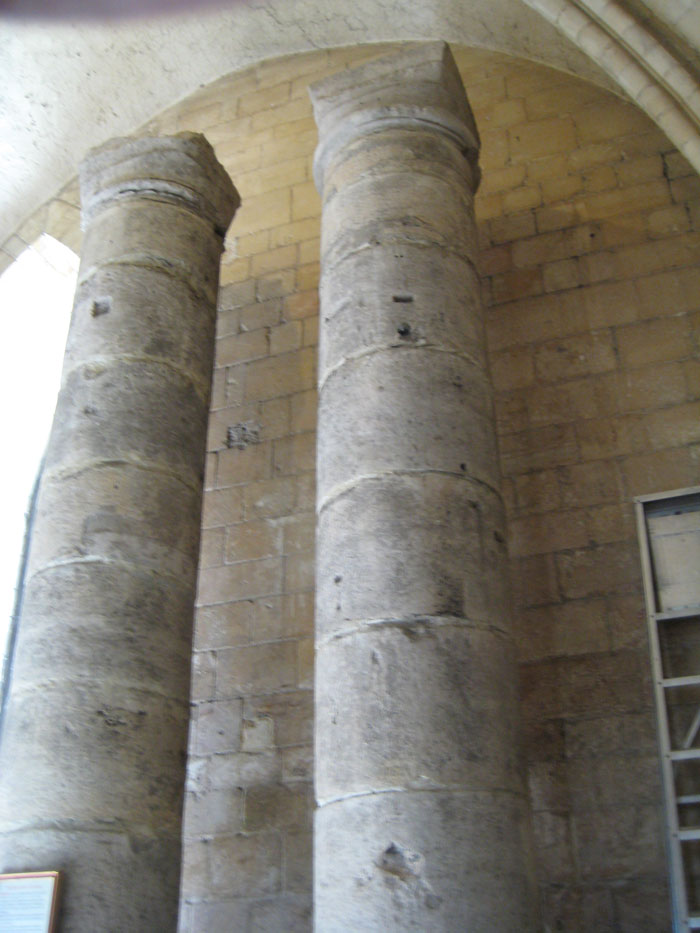
The two columns are composed of cylindrical stone drums of Marquise Stone. They are 4.5 metres high and over half a metre in width tapering slightly towards the top. The columns once formed part of the original Anglo-Saxon church of St Mary’s, Reculver dating back to c. 670AD. As the church was built within the walls of a Roman fort, and the Romans are known to have quarried the stone, it is possible that the stone was robbed from an earlier Roman structure to build the church.
